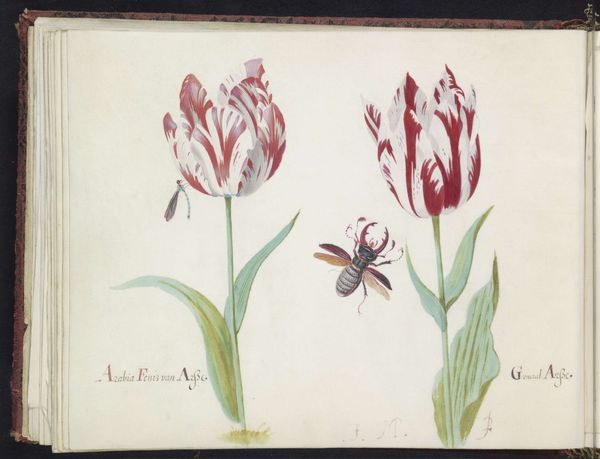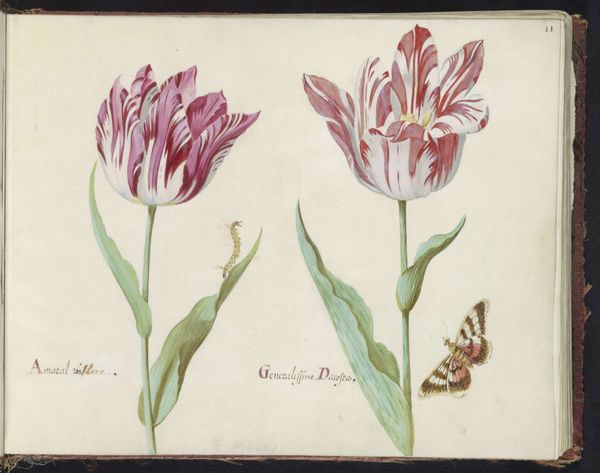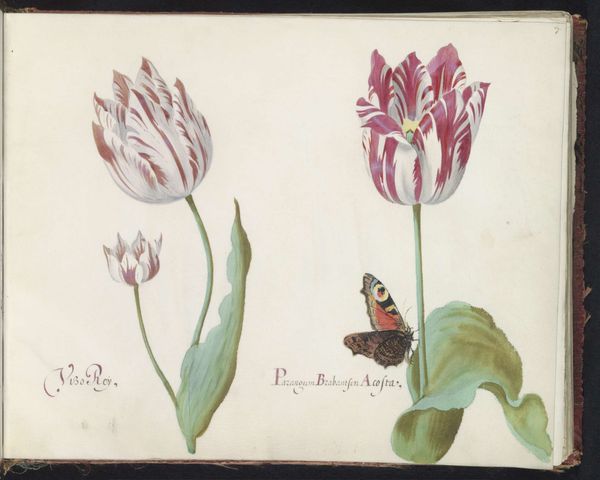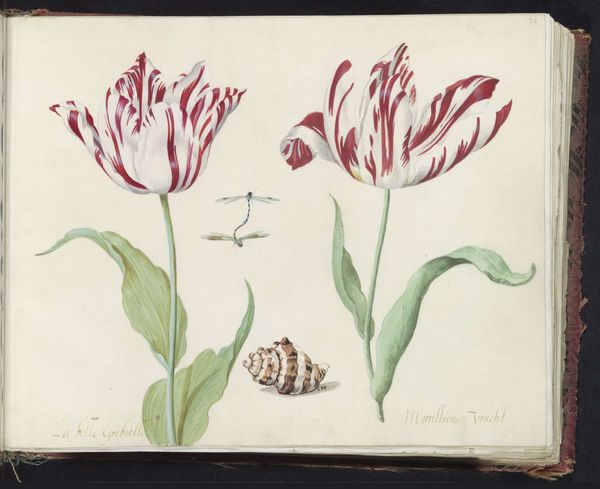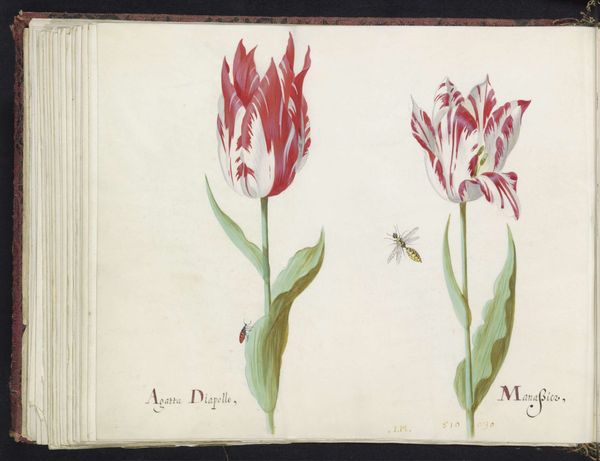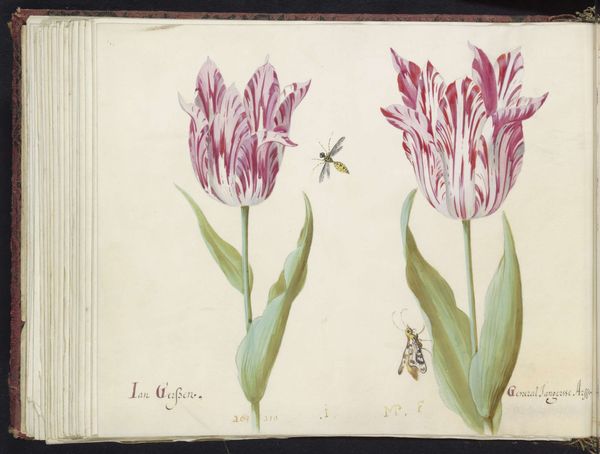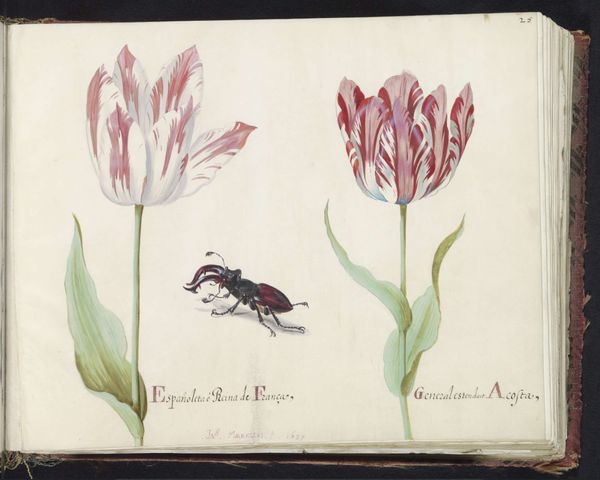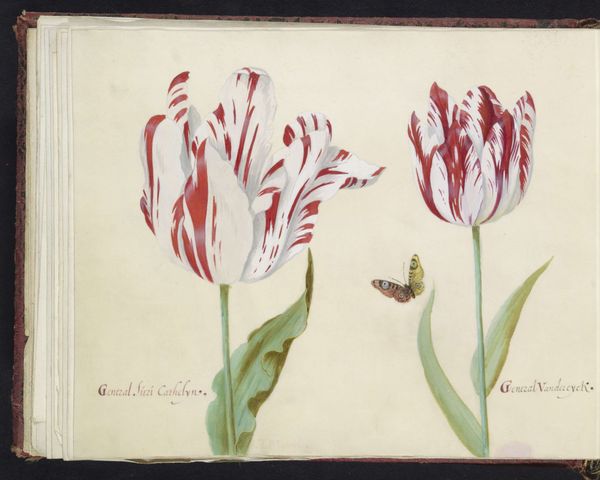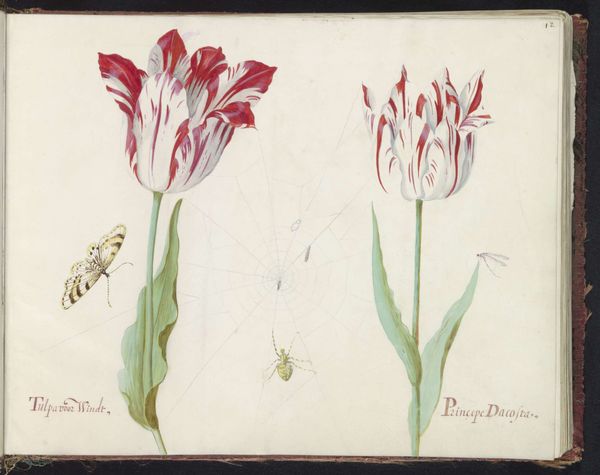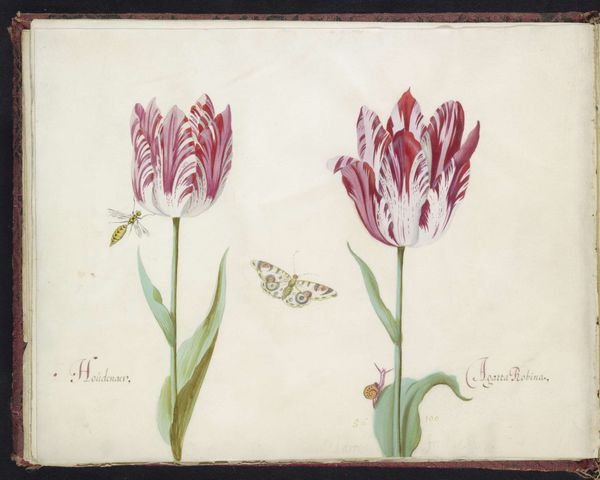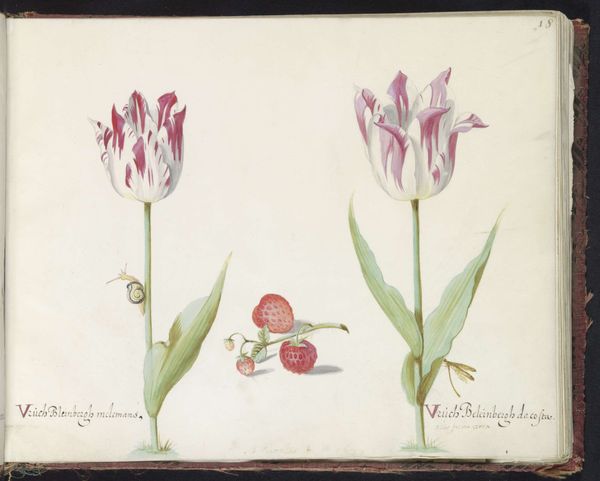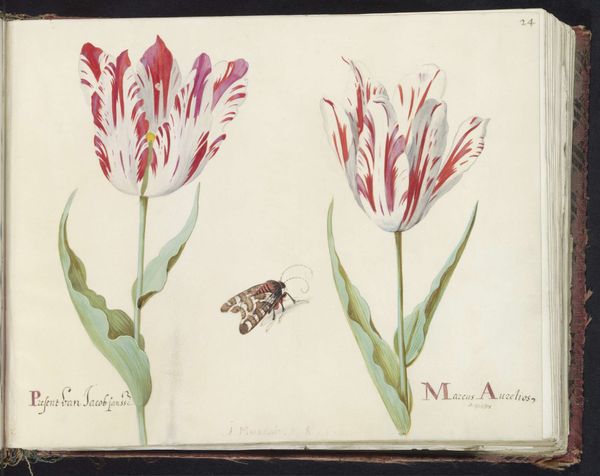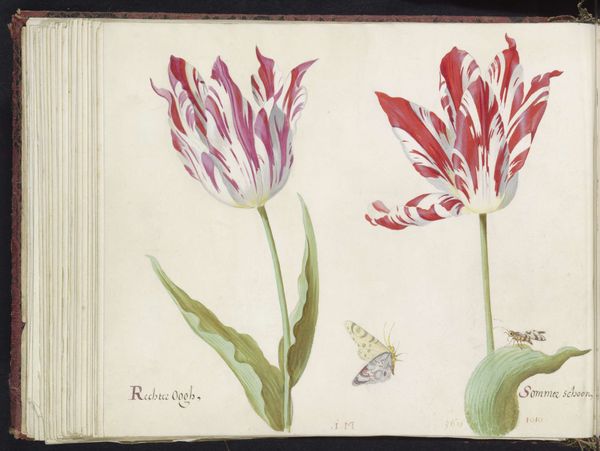
painting, watercolor
#
dutch-golden-age
#
painting
#
watercolor
#
coloured pencil
#
watercolour illustration
#
botanical art
#
watercolor
Dimensions: height 265 mm, width 335 mm
Copyright: Rijks Museum: Open Domain
Curator: This watercolor and coloured pencil piece is entitled "Twee tulpen met akelei, nachtvlinder en kever," or "Two Tulips with Columbine, Moth and Beetle," and it’s dated to 1637. Jacob Marrel, a master of botanical art from the Dutch Golden Age, is its creator, and it now resides here at the Rijksmuseum. What are your initial thoughts? Editor: Well, the first thing that strikes me is how delicate it feels. There’s an airy lightness despite the meticulous detail, almost like a memory captured on the page. Curator: That lightness might come from the medium itself – the translucent washes of watercolor which allows the page to breathe, combined with colored pencil for the finer details. I’m especially intrigued by the materials he would have sourced; the pigments, the paper... They each tell a story of trade routes and specialized craft production in the 17th century. The labour involved in such a detailed piece, and its function as potentially both a scientific record and luxury item speaks volumes about social structures of the time. Editor: I am especially drawn to the "Admiral de Costa" tulip—its name and striking streaks evoke voyages, exploration, and trade; indeed, these blooms were status symbols, invested with desire and, unfortunately, economic instability, referencing 'Tulip Mania', the Dutch financial crisis of the 1630s, not long before Marrel captured this flower. This visual memento is more than just botany—it speaks to ephemeral beauty and human folly. Curator: Absolutely, and considering that Tulip Mania preceded the creation of this artwork by mere years, the painting can be viewed through a lens of anxiety and economic disparity. It brings questions of the artist's patronage into view, and invites consideration of the distribution of these pieces. Editor: The placement of the moth and beetle, symbols often associated with transience, underscores this memento mori, further suggesting an awareness of fleeting wealth and mortality amidst burgeoning trade and prosperity. The inclusion of these creatures in the piece reflects the understanding of human impact and influence on nature. Curator: It’s a brilliant intersection of naturalism and artistic skill, isn't it? The very creation of this object involved complex supply chains. Editor: It's incredible to unpack all the history contained in this deceptively simple floral illustration. I will surely look at more such works differently from now on! Curator: Precisely. Looking through both material and symbol yields such varied readings.
Comments
No comments
Be the first to comment and join the conversation on the ultimate creative platform.
